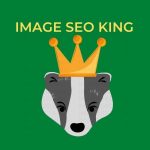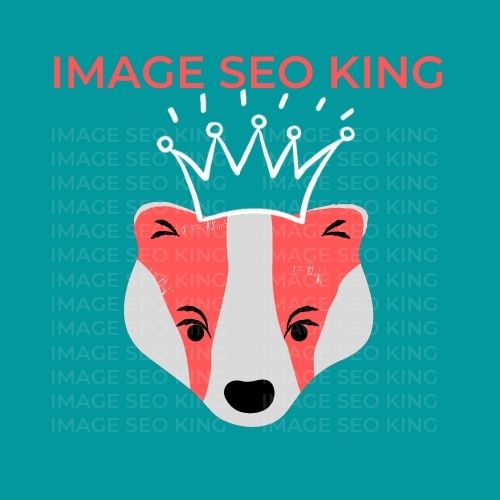
HoneyBadger, the real Image SEO King
Mastering Image SEO
In an era where visual content reigns supreme, neglecting the optimization of your website’s images can lead to missed opportunities and lower search engine rankings. Fortunately, with the right knowledge and strategies, you can harness the power of image SEO to improve your website’s performance.
Why Image SEO Matters
Images are an integral part of web content, serving various purposes, from illustrating concepts to enhancing user engagement. However, their significance goes beyond aesthetics. Here’s why image SEO matters:
-
Improved User Experience for SEO’d Images:
SUMMARY: Optimized images load faster, providing a smoother user experience. Users tend to abandon slow-loading websites, which can negatively impact your bounce rate and rankings.
In today’s fast-paced digital world, users have increasingly high expectations when it comes to website performance. Slow-loading websites are a major turn-off for visitors. When images are not optimized for the web, they can significantly slow down page load times. This can result in frustrated users who are more likely to abandon your site, leading to a higher bounce rate.
Optimized images, on the other hand, load quickly and seamlessly. This ensures a smoother and more enjoyable user experience. Visitors can navigate your website without the frustration of waiting for images to load. A positive user experience not only keeps visitors on your site but also encourages them to explore more pages and engage with your content.
-
Enhanced Accessibility for SEO’d Images:
Summary: Proper image optimization, including alt text, benefits users with disabilities who rely on screen readers. This also contributes to better SEO as search engines value accessible websites.
Web accessibility is a critical aspect of modern web development. Many users rely on screen readers or other assistive technologies to access online content. Proper image optimization, including the use of descriptive alt text, plays a crucial role in making your website accessible to everyone, regardless of their abilities.
When you provide informative alt text for your images, you enable screen readers to convey the content and context of those images to visually impaired users. This ensures that all visitors can fully understand and engage with your content. Beyond the ethical considerations, accessibility also has SEO benefits. Search engines like Google reward websites that prioritize accessibility, as they aim to provide the best possible user experience to all users.
-
Search Engine Rankings for SEO’d Images:
Summary: Search engines consider various factors when ranking websites, and image optimization is one of them. Optimized images can help your site rank higher in image search results, potentially driving more organic traffic.
Search engine optimization (SEO) is all about making your website more visible in search engine results pages (SERPs). While many factors contribute to SEO, image optimization is often overlooked but shouldn’t be underestimated.
Search engines, such as Google, consider a variety of factors when ranking websites. This includes the quality of your content, the relevance of your keywords, and the overall user experience. Images are not exempt from this evaluation. When you optimize your images, you provide search engines with valuable information about your content.
Furthermore, properly optimized images can appear in search engine image results, increasing your website’s visibility. Users often use image searches to find specific content or products, and having your images show up in these results can drive additional organic traffic to your site.
Image SEO matters because it directly impacts user experience, accessibility, and search engine rankings. By optimizing your website’s images, you create a more enjoyable experience for your visitors, make your content accessible to a wider audience, and improve your chances of ranking higher in search engine results. It’s a multifaceted strategy that should be an integral part of your overall SEO efforts.
Mastering Image SEO
Now, let’s delve into the strategies and best practices for mastering image SEO:
-
Choose the Right Image:
Summary: Start by selecting high-quality and relevant images that complement your content. Images should be clear, visually appealing, and contextually appropriate.
Selecting the right image is the first step in effective image SEO. High-quality and relevant images not only enhance the visual appeal of your content but also support your message. When choosing images, consider how they align with the topic, tone, and goals of your web page. Ensure that the images you choose are clear, appropriately sized, and contextually appropriate. A well-chosen image can significantly improve user engagement and retention.
-
Optimize File Names for Images:
Summary: Rename image files to describe their content accurately. Use descriptive keywords, hyphens to separate words, and avoid generic file names like “image001.jpg.”
Optimizing image file names is often an overlooked aspect of image SEO. Instead of using generic file names like “image001.jpg,” rename your image files to describe their content accurately. Use descriptive keywords that relate to the image and your content. Use hyphens to separate words, making them more readable for both search engines and users. For example, if your image shows a red bicycle, a suitable file name could be “red-bicycle.jpg.”
-
Compression for Images:
Summary: Compress images to reduce their file size while maintaining quality. Smaller image files load faster, which is essential for SEO and user experience.
Image file size is a crucial factor in page load speed, which directly affects SEO and user experience. Use image compression techniques to reduce the file size of your images while maintaining their quality. Smaller image files load faster, ensuring that your web pages load swiftly on various devices and network conditions. There are various image compression tools and plugins available to help you achieve this balance.
-
Alt Text for Seo’d Images:
Summary: Provide descriptive alt text for every image. Alt text helps search engines understand the content of the image and assists visually impaired users. Use keywords naturally and be concise.
Alt text (alternative text) is essential for both SEO and accessibility. For every image on your website, provide descriptive alt text that explains the content and purpose of the image. Alt text helps search engines understand the context of the image, contributing to better SEO. Additionally, it benefits visually impaired users who rely on screen readers. Use relevant keywords naturally within alt text while ensuring it remains concise and informative.
-
Image Titles and Captions for SEO’d Images:
Summary: Use descriptive titles and captions to provide additional context for your images. This can improve user engagement and SEO.
Image titles and captions provide an opportunity to add more context to your images. They not only improve user engagement by providing additional information but also enhance SEO. Use descriptive titles and captions to reinforce the message or theme of your content. When crafted thoughtfully, they can encourage users to spend more time on your site and explore related content.
-
Image Sitemaps or Image Galleries:
Summary: Create and submit an image sitemap to search engines. This helps search engine crawlers discover and index your images more efficiently.
To ensure that search engines discover and index your images efficiently, create an image gallery or image sitemap. This sitemap contains information about the images on your site, including their location and other relevant details. Submitting this sitemap to search engines helps them understand the structure of your image content, potentially leading to better image search rankings.
-
Responsive Design:
Summary: Ensure your website is mobile-friendly. Responsive design ensures that images are displayed correctly on various devices, contributing to better user experience and SEO.
In today’s mobile-centric world, responsive design is critical. Ensure that your website is mobile-friendly, and that images are displayed correctly on various devices and screen sizes. Responsive design not only improves user experience but also contributes to SEO, as Google rewards mobile-friendly websites with higher rankings in mobile search results.
-
Page Load Speed:
Summary: Optimize your website’s overall performance to ensure fast page load times. This includes optimizing images, utilizing browser caching, and reducing server response times.
Optimizing image SEO goes hand in hand with optimizing your website’s overall performance. Fast page load times are a ranking factor in SEO. To achieve this, optimize not only your images but also your code and server resources. Utilize browser caching to reduce the need to load images on subsequent visits and minimize server response times to deliver a snappy user experience.
-
Schema Markup:
Summary: Implement schema markup for images when appropriate. This can provide search engines with additional information about the image and its context.
Implementing schema markup specifically for images can provide search engines with even more information about your images and their context. Schema markup can help your images appear in rich search results, such as image carousels and rich snippets, enhancing their visibility in search engine results pages.
-
Monitor and Analyze:
Summary: Regularly monitor the performance of your images using tools like Google PageSpeed Insights and Google Analytics. Analyze user engagement and make adjustments as needed.
Regularly monitor the performance of your images using tools like Google PageSpeed Insights and Google Analytics. Pay attention to metrics such as page load times, user engagement, and bounce rates. Analyze the data to identify areas for improvement in your image SEO strategy. Be prepared to make adjustments and refinements as needed to ensure your images continue to enhance your website’s visibility and user experience.
Mastering image SEO is a critical aspect of boosting your website’s visibility in today’s competitive digital landscape. By following the best practices outlined above and continually optimizing your images, you can enhance user experience, improve search engine rankings, and ultimately drive more organic traffic to your website. Don’t underestimate the power of image SEO; it’s a valuable tool in your SEO arsenal. Learn the Image SEO steps for success.

HoneyBadger, the real Image SEO King

HoneyBadger, the real Image SEO King
